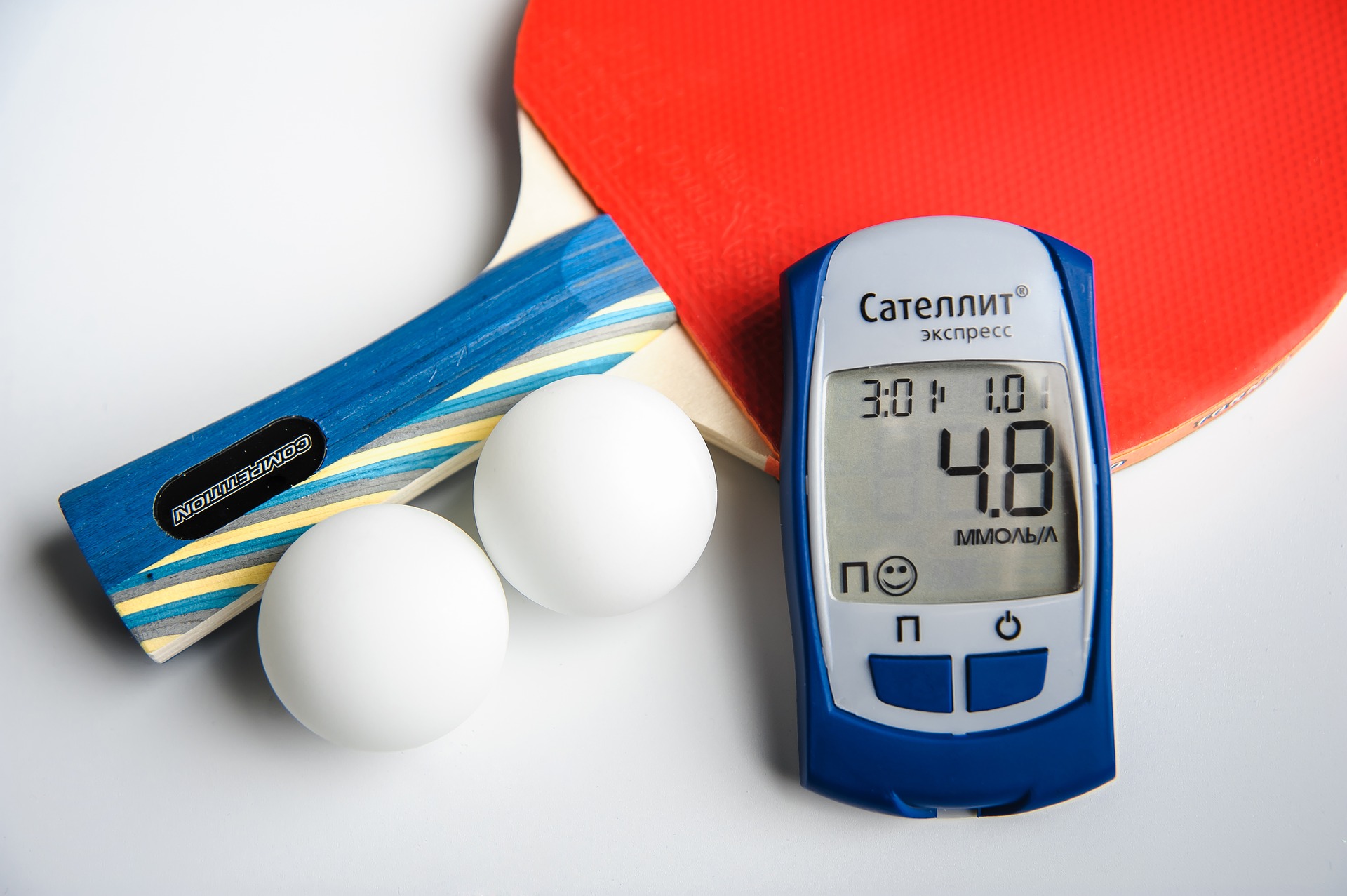Diabetes and sports is possible. Not only that, but it is highly recommended that diabetics perform physical exercises to avoid getting complications and maintain a healthy life.
Diabetes is a chronic, progressive disease that is mainly represented by hyperglycemia(increased glucose in the blood) induced by lowered insulin production in the pancreas (the organ where insulin synthesis and production takes place), insulin resistance or both with changes in lipid and protein metabolism.
Insulin resistance is due to the inability of the hormone produced by the endocrine pancreas to realize its effects on adipose tissue, muscles and liver.
The approach of the therapeutic plan of the diabetic patient includes diet, physical activity, pharmacological treatment.
We will try to enhance the role of physical activity in prediabetes and diabetes.
The American Diabetes Association (ADA) guide recommends for patients with type 2 diabetes a minimum of 150 minutes of moderate or intense physical activity (50 – 70% maximum heart rate) per week consisting of aerobic exercise (running, swimming, cycling, walking) , resistance exercises (weight exercises) and balance exercises.
What changes occur in the body for patients with diabetes while practicing sports?
Glucose is the most important source of energy in the body being used by the brain (50%), skeletal muscle (20%), kidneys, blood circulation and other tissues.
Immediately after meals (postprandial) glucose is stored as glycogen in the liver and muscles. Excess glucose is stored as triglycerides in adipose tissue. At rest (fasting) blood glucose levels are maintained by hepatic and muscular glycogenolysis (consumption of hepatic and muscular glycogen reserves), but also by hepatic and renal gluconeogenesis (synthesis of glucose) from pyruvate, lactate, glycerol, amino acids.
During physical exercises:
- the blood glucose level decreases and after stopping the physical effort the glycemia continues to decrease, the glucose being used to replenish the glycogen reserves. Maintaining the normal values of blood sugar (necessary for brain function) is achieved by the rapid release of glucose from the muscles and liver glycogen deposits, and after their depletion by glucose synthesis (gluconeogenesis) from glycerol
- the release of catecholamines cause an increase in heart rate, vasoconstriction in the splanchnic territory, suppression of insulin secretion
- the decrease in the level of insulin in the blood determines the activation of the synthesis of hepatic and renal glucose as well as the hydrolysis of triglycerides in fatty acids and glycerol used as energy
- counterregulatory hormones are released (glucagon, cortisol, growth hormones) that induce gluconeogenesis and glycogenolysis to maintain normoglycemia.
Patients with type 1 diabetes do not have their own insulin secretion
Insulin administered by injection (exogenous insulin) induces the blockade of gluconeogenesis and glycogenolysis even in conditions of low glycemia with risk of hypoglycemia.
Also in moderate physical activity there is a poor response to low blood sugar from counterregulatory hormones.
If the physical effort is very intense, the glycemia increases above the normal value (hyperglycemia), especially through the counter-regulatory hormones, and if the diabetes is unbalanced, diabetic ketoacidosis can occur (decreased alkaline reserve in the blood, due to the accumulation of ketones).
How is glucose taken up by the muscles?
Blood glucose is taken up by the GLUT 4 transporter. Its entry into the muscle cell is done through two mechanisms:
- insulin-dependent by fixing insulin to the insulin receptor inducing its autophosphorylation and activation of the substrate protein and phosphatidylinositol 3 phosphate
- non-insulin-dependent by activating a serine kinase with the release of calcium and nitric oxide or by MAP (mitogen activated protein kinase) – an enzyme system that is activated during exercise or by AMP kinase.
The benefits of sports in diabetes
increases insulin sensitivity so that blood glucose will be used more efficiently
- increases the use of glucose in tissues
- lowers blood sugar
- decreases the value of glycated hemoglobin
- improved oxygen consumption
- improves vascular endothelial function and decreases arterial stiffness
- lowers blood pressure
- increases muscle strength
- muscle mass profile improvement (triglycerides decrease)
- weight loss
What type of physical effort is recommended?
- Moderately intense aerobic exercise (heart rate 50 – 70% of maximum heart rate)
- Anaerobic endurance exercises (with weights)
- Balance exercises
Recommendations for patients with type 1 diabetes who perform physical activity
- check your blood sugar before exercise and if it is below 100 mg / dl eat a snack.
- moderate physical exercises to begin with
- It is recommendeded physical activity takes place 1 to 3 hours after rapid insulin injection
- reduces the dose of fast-acting insulin by up to 50%
- In patients with insulin pumps, the basal infusion rate is reduced, pre- and post-meal boluses are modified.
Recommendations for patients with type 2 diabetes who perform physical activity
- before performing the physical effort, screening for ischemic heart disease and for the identification of diabetes complications (microalbuminuria, nephropathy, neuropathy, retinopathy) is recommended
- moderate exercise is recommended (heart rate 60 – 70% maximum frequency) surveillance is recommended in patients with insulin or oral antidiabetics (risk of hypoglycaemia)
Diabetes and sports is very beneficial in patients with prediabetes and diabetes – this is supported by trials and clinical trials. Physical activity must be an integral part of the therapeutic plan along with diet and pharmacological treatment.
Physical exercises must be adapted to the particularities of the patient with type 1 or 2 diabetes by the specialist doctor under the supervision of the a sports trainer.
